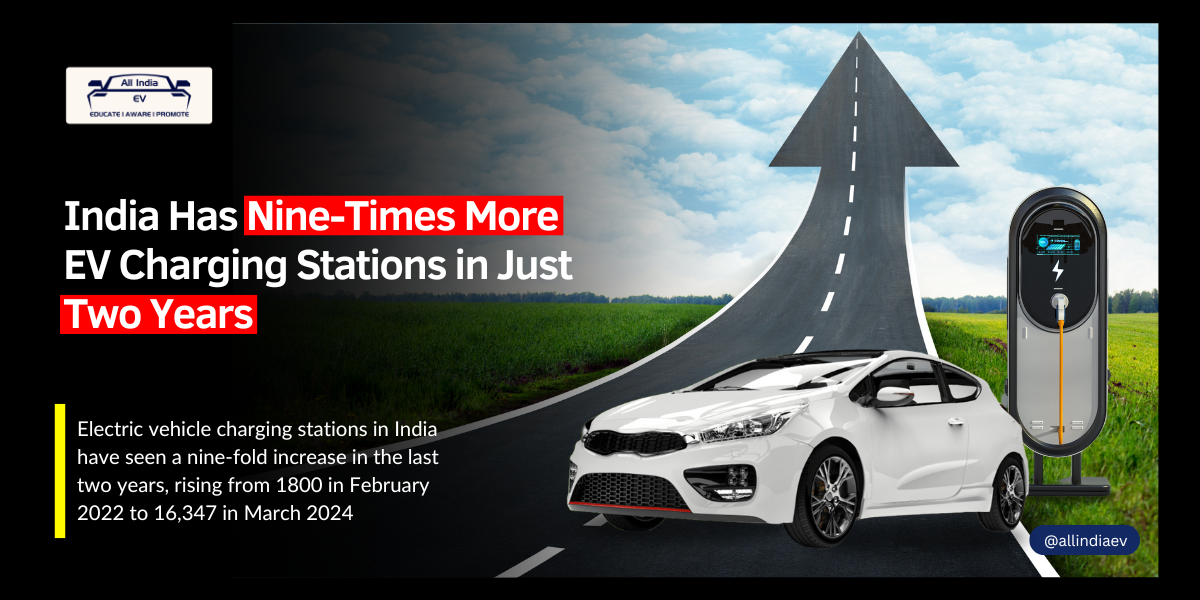
India’s EV charging stations Energize: 9x growth in 2 years!
India’s electric vehicle charging infrastructure has made a huge shift in the last two years, from a meager 1,800 to 16,347. This ninefold increase speaks to the fast-paced EV penetration in the country. The initiatives taken by the government to support this shift toward sustainable mobility.
However, to service this nascent EV market, much more extensive charging infrastructure is needed in India. Projections indicate that 1.32 million new charging stations will be required to accommodate the increase in electric vehicles by 2030.
India’s EV Charging Infrastructure: A Rapid Ascent
The landscape of India’s EV charging infrastructure has undergone a sea change in the last two years. The number of public charging stations has grown ninefold. From a mere 1,800 in February 2022 to an impressive 16,347 by March 2024. This has happened in light of the EV market’s quickening and the ambitious targets set for vehicle electrification by the government.
Therefore, charging infrastructure demand is projected to increase multi-fold in the years to come. By 2030, electric vehicles will form nearly a third of India’s passenger vehicle market. With a total of 50 million EVs running on the country’s roads. To feed this growth, a robust charging network will be required. For example, should a goal be set of at least one public charging station per every 40 electric vehicles sold, that would be over 400,000 every year, for a total of 1.32 million charging stations by 2030.
India’s Unique Charging Infrastructure Challenge
Rohit Chaturvedi, Partner at Forvis Mazars India, said, “India needs to scale up public charging infrastructure to meet the growing demand and reduce range anxiety.“
The challenges that India’s scenario in electric vehicle charging throws up are significantly different due to the dominant two- and three-wheelers. Running largely on AC, slow charging, and battery swapping. Four-wheelers and buses, on the other hand, need a mix of AC and DC charging solutions.
Although home and workplace charging will remain the main mode of charging for private two-wheelers and four-wheelers. Commercial fleets are likely to depend on private depots or public charging networks. Demand for DC fast chargers will also increase with the increased number of electric four-wheelers. Thus, a robust public charging infrastructure is required.
Accelerating India’s charging infrastructure
The government’s initiatives drive the EV charging infrastructure in India. It was the FAME scheme that propelled incentives to encourage the mass adoption of EVs, not to mention the development of EV charging stations. Under the Ministry of Heavy Industries, a large number of charging stations were sanctioned across the country. Covering important transportation corridors. Further, the Ministry of Housing and Urban Affairs is incentivizing semi-public EV charging infrastructure in residential and commercial areas.
This goes in sync with the global EV sales push, which grew immensely by 27% in 2023. Presently, with over 40 million electric vehicles on the roads globally by 2024, the need for robust charging infrastructure has never been more obvious. How far India fares in this field is going to be critical in order to hold up its blossoming EV market and drive towards a sustainable future.

